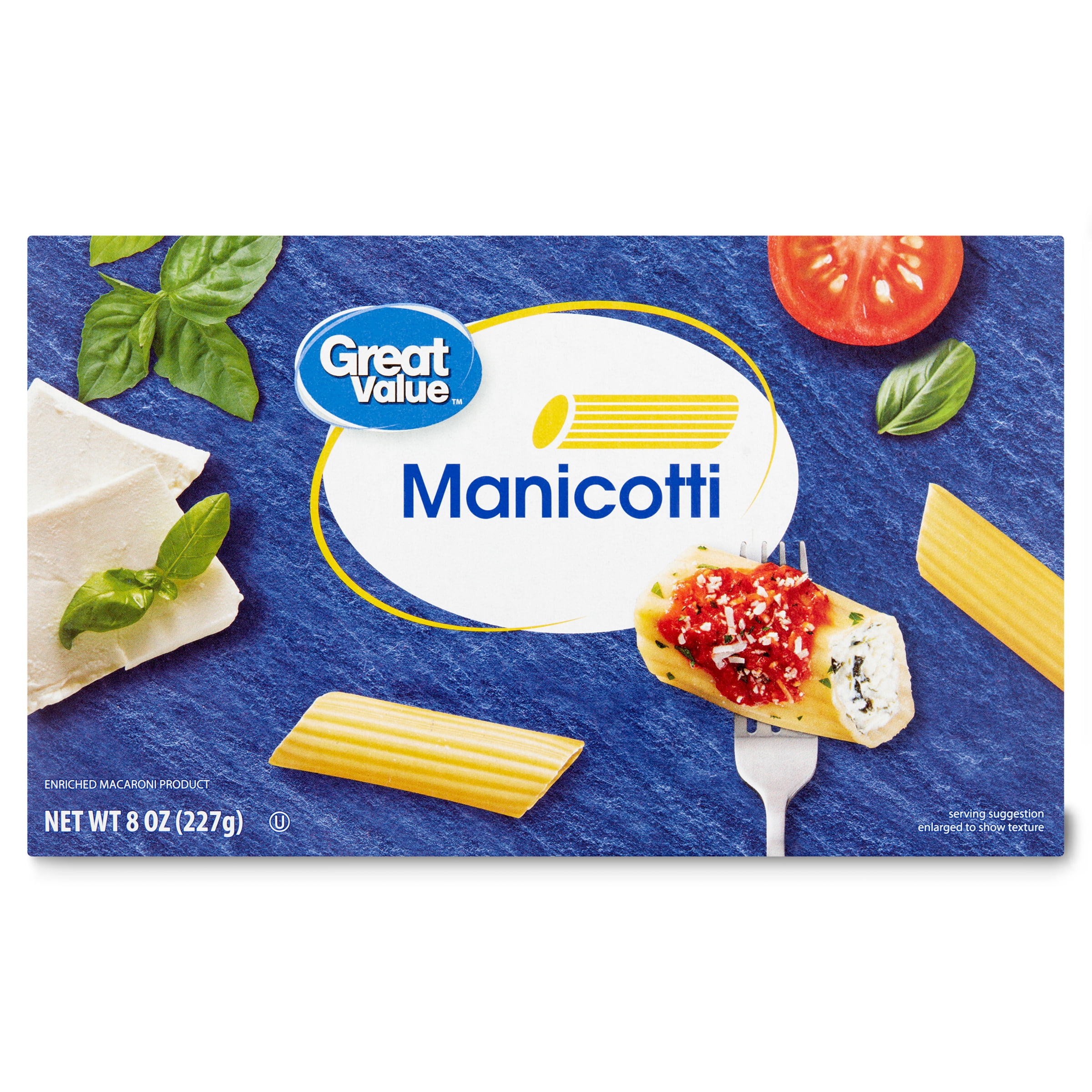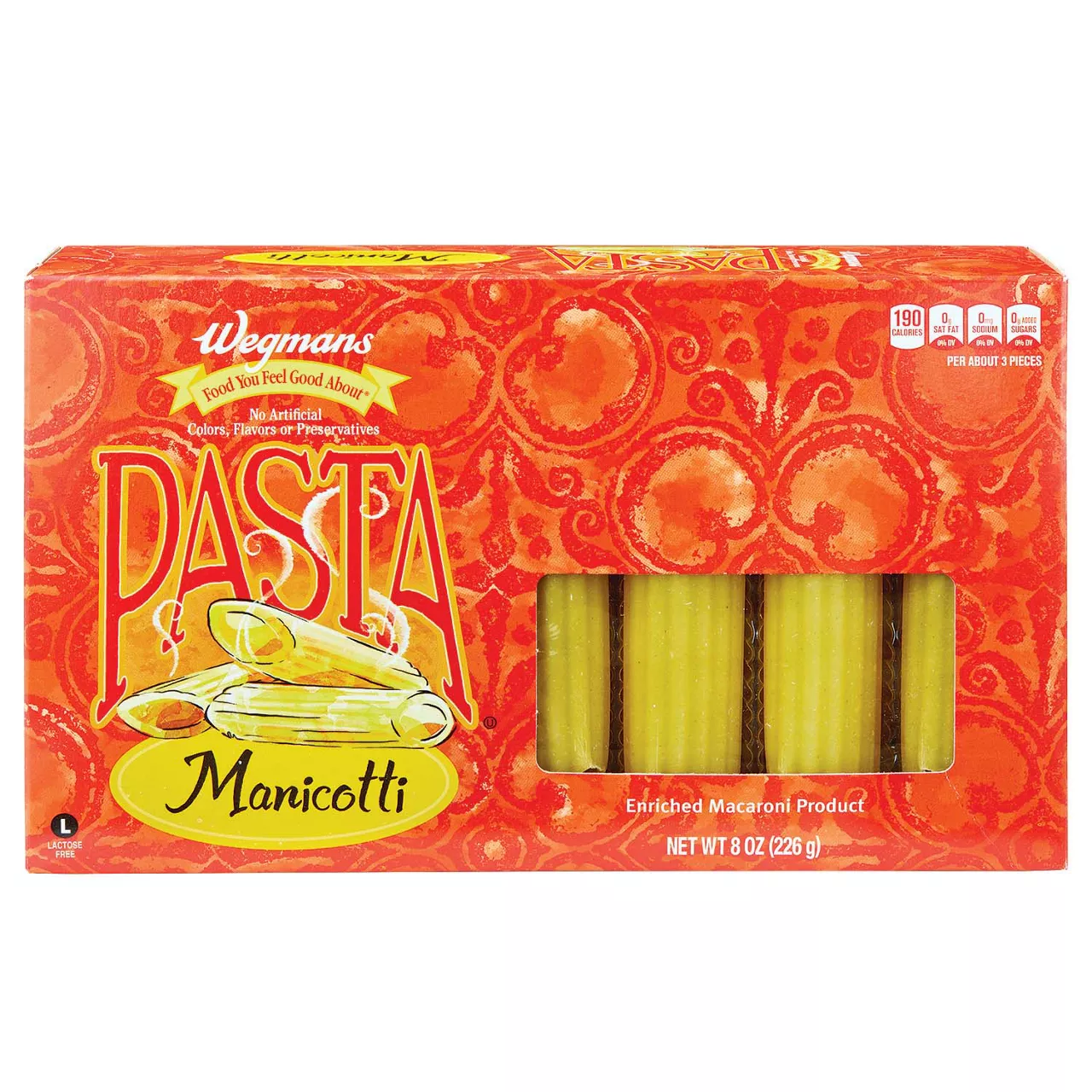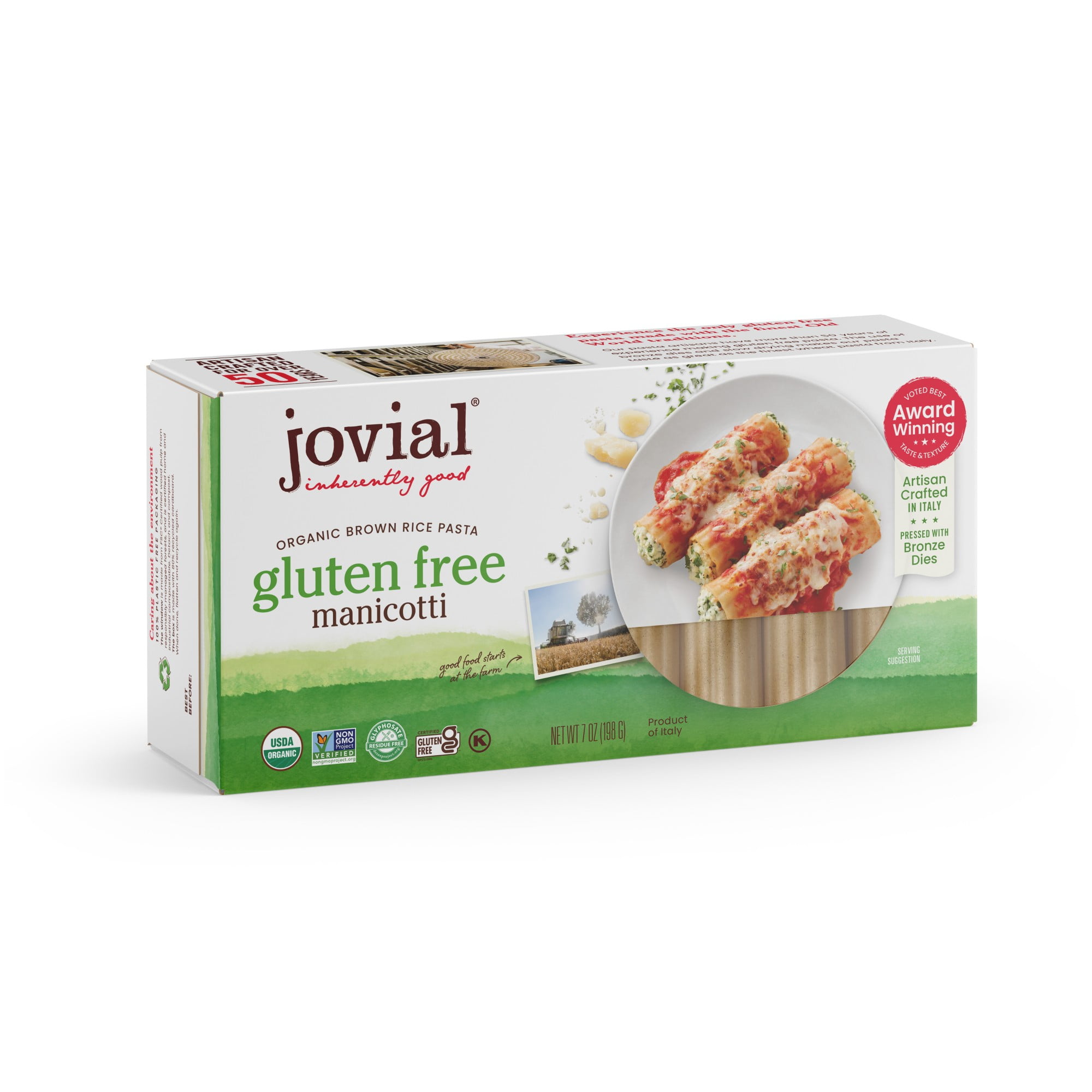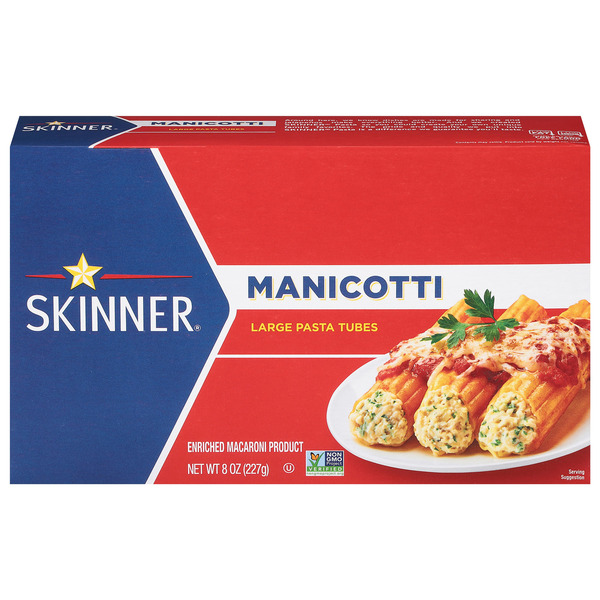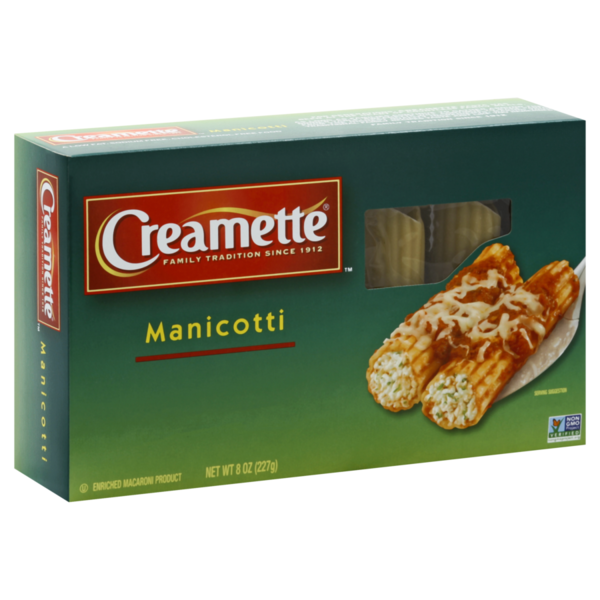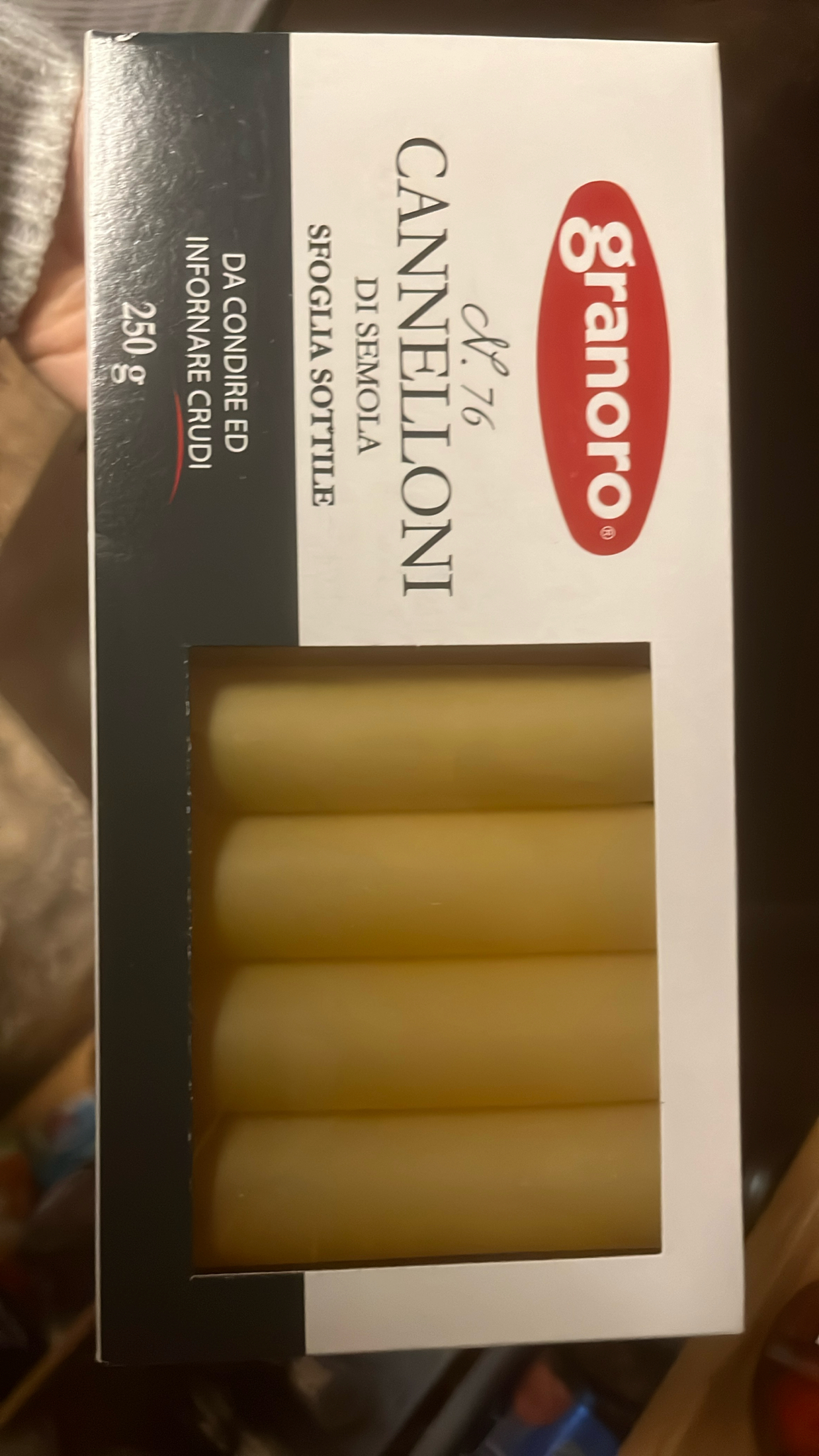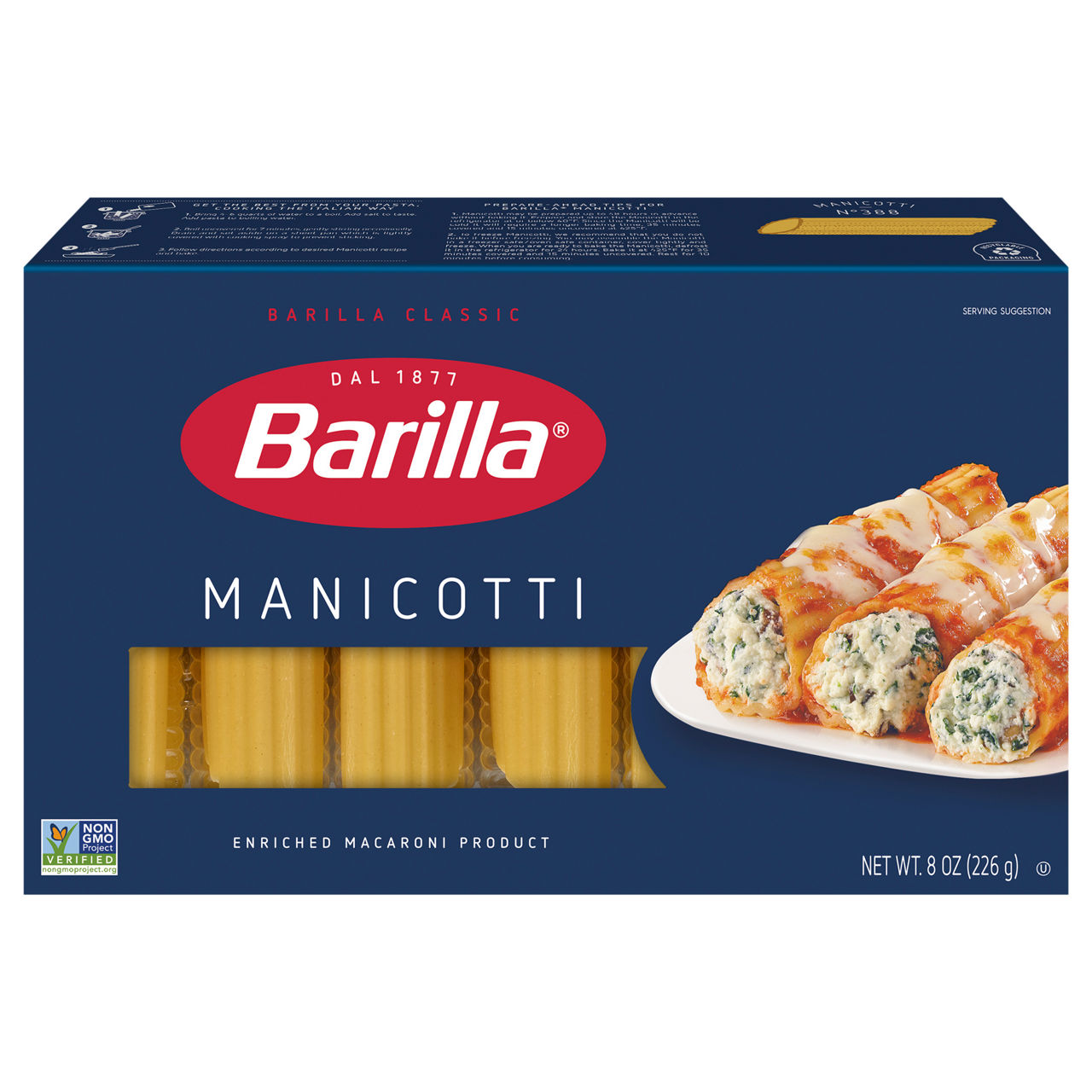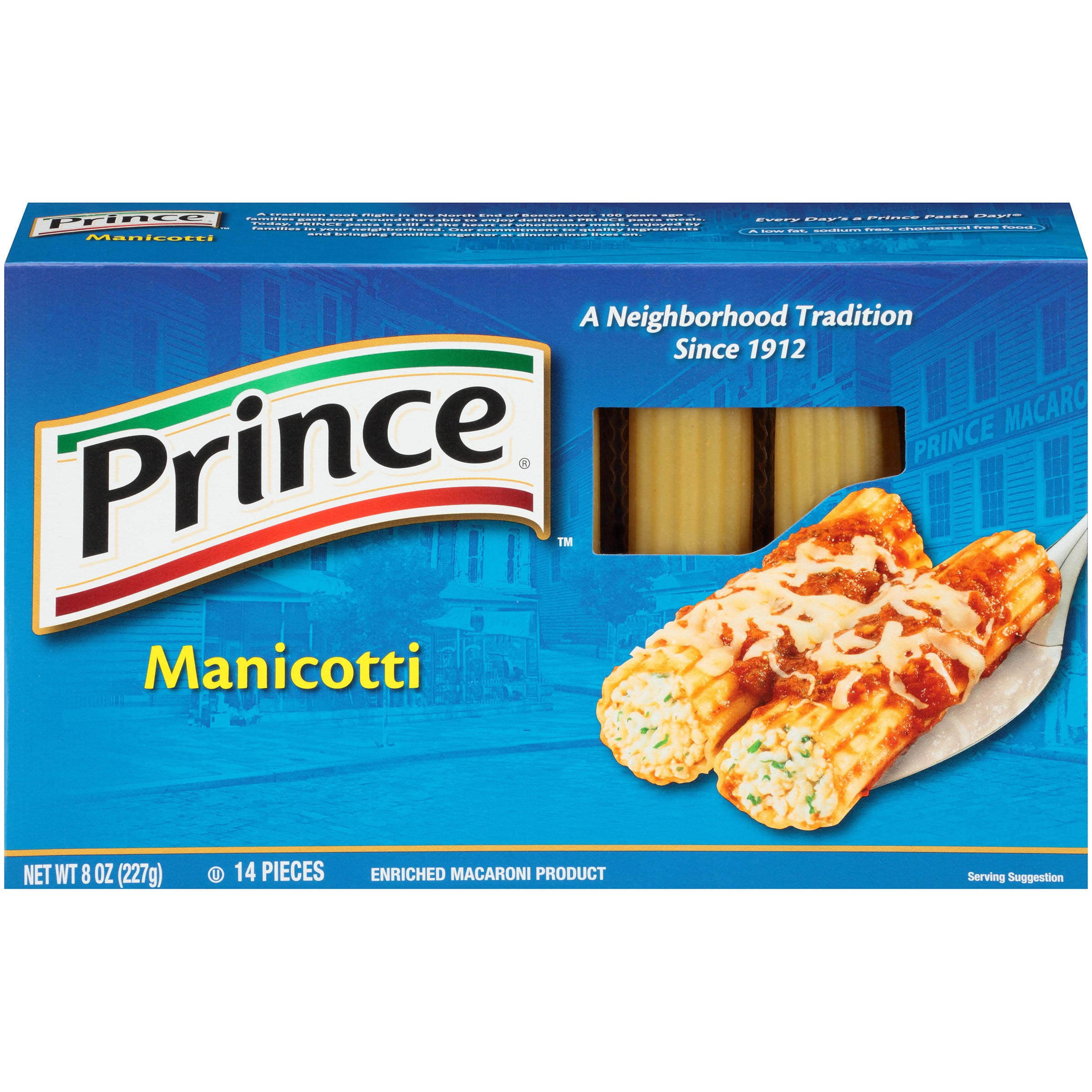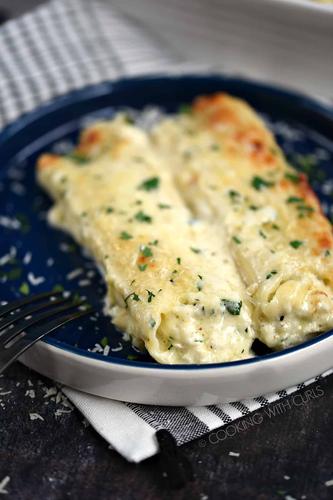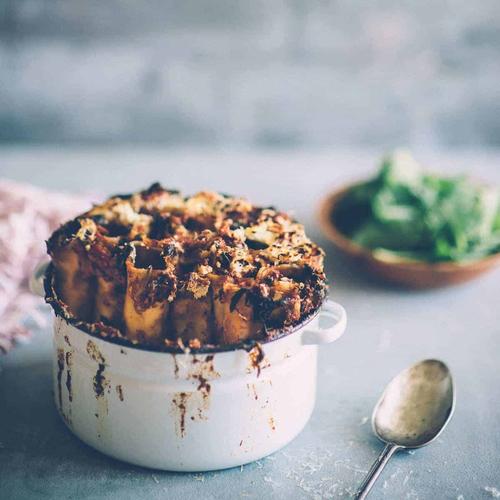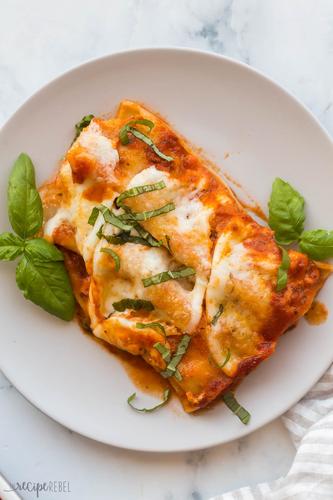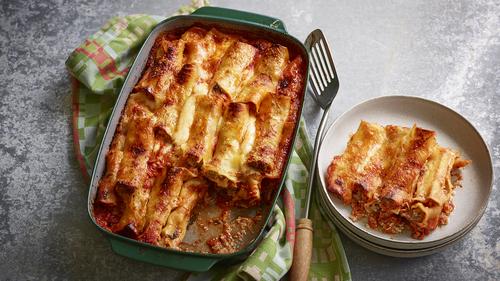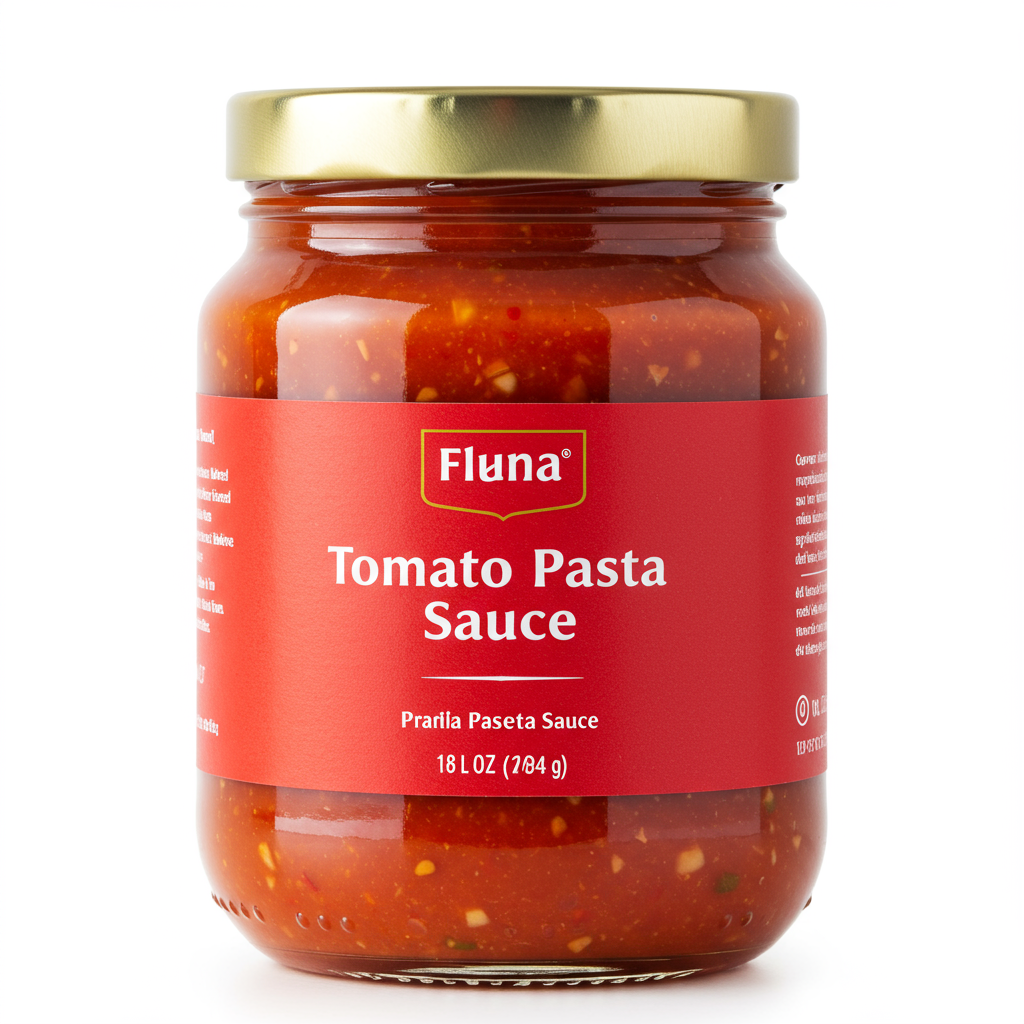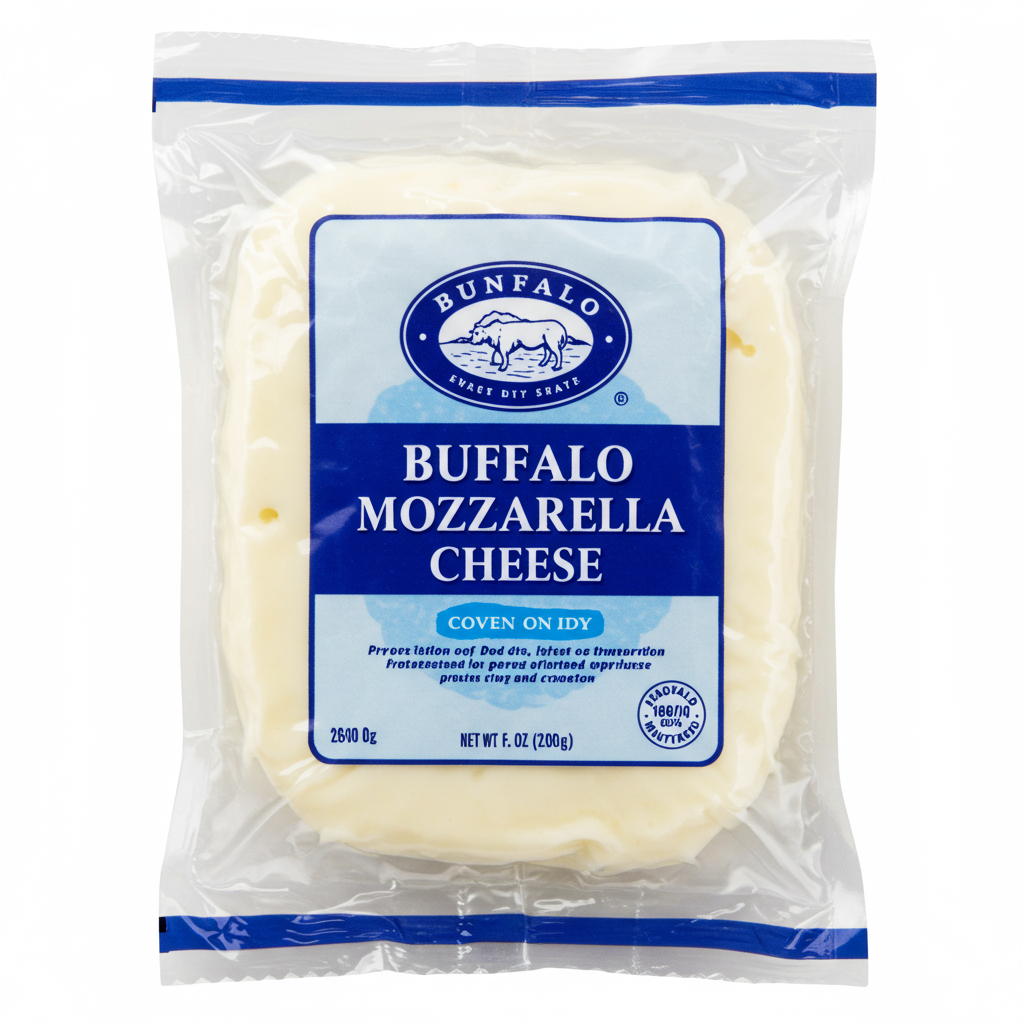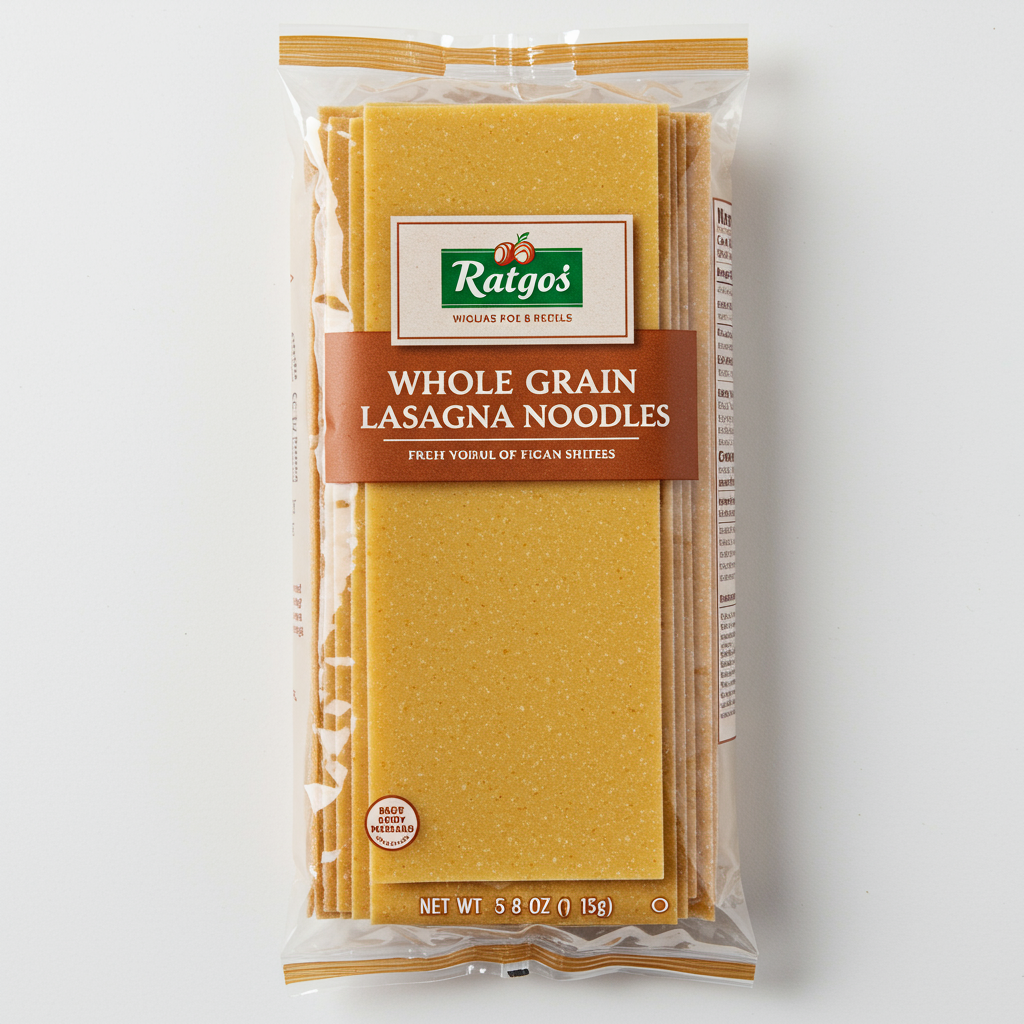MAIN DISHES
Manicotti Pasta
Manicotti is a popular Italian pasta dish, well loved for its delicious, tender pasta tubes generously filled with rich, cheesy fillings. The word "manicotti" means "little sleeves" in Italian, alluding to the pasta's shape resembling small sleeves or cuffs. This versatile dish allows for a wide array of delectable fillings, from classic ricotta cheese and spinach to heartier options such as ground meat or sausage.
Preparing manicotti at home is a delightful culinary experience, with its simple preparation and high potential for customization. Precooked manicotti shells are available in most grocery stores and can be filled with a mixture of your choosing. After boiling the pasta until al dente, filling the shells, and placing them in a baking dish with marinara sauce, the dish is topped with cheese and baked until bubbly and golden brown.
47%
CARBS
25%
FAT
28%
PROTEIN
139 Manicotti Pasta Products
Used In 14 Recipes
4
Ricotta Stuffed Manicotti With Tomato Basil Sauce
3
Cheesy Manicotti Delight
1
Cheesy Spinach Manicotti Delight
4
Cheesy Sausage-Stuffed Manicotti
2
Chicken Alfredo Stuffed Manicotti
1
Honeycomb Cannelloni Recipe
1
Cheese Cannelloni recipe
38
Sausage and ricotta cannelloni
Manicotti Pasta Is Frequently Used With
Manicotti Pasta FAQ
Cooking with manicotti can be both fun and rewarding, but there are common misconceptions and issues that home cooks often encounter.
One common question is whether to cook the manicotti shells before stuffing them. While it might seem logical to stuff the shells while they're still hard and then cook them, they can often end up overcooked and mushy. Instead, you should boil the shells until they're al dente, then let them cool before stuffing. This ensures the pasta is perfectly cooked and retains its shape after baking.
A major pitfall when working with manicotti is not properly sealing the ends or overfilling the shells, causing the filling to leak out during baking. To avoid this, be mindful when stuffing your manicotti and ensure the filling is evenly dispersed without overstuffing.
In terms of getting the most out of your ingredient, flavor infusion is key. Use a rich tomato sauce to both line the dish and top your filled manicotti before baking. This will not only ensure a moist, flavorful manicotti but also helps prevent any pasta from drying out.
For fun twists, consider exploring different fillings. Beyond the traditional ricotta and spinach, you can play around with a myriad of proteins, cheeses and even seafood. The options are quite endless with manicotti.
Lastly, treat your manicotti dish like lasagna and let it rest for 10-15 minutes once removed from oven. This allows the juices to redistribute and the filling to set a bit, making it easier to serve.
Do I always have to pre-cook manicotti shells before stuffing?
Why is my manicotti filling leaking out?
Can I make manicotti without cheese?
Can I use other pastas to make manicotti?
My manicotti is dry, what did I do wrong?
What is the best way to fill manicotti shells?
Can I make manicotti ahead of time?
Why did my manicotti shells split?
Why is my manicotti bland?
Can I use white sauce in manicotti?
Expiration & Storage Tips
When does manicotti expire?
Unopened manicotti pasta can generally last 1 to 2 years past its printed date, if it has been stored in a cool, dry place. However, once the package has been opened, it's best to use it within 1 year. Homemade manicotti, after being cooked, should be consumed within 3 to 5 days if stored in the refrigerator. If you have leftover manicotti that you'd like to save, you can freeze it for up to 2 to 3 months.
How do you tell if manicotti is bad?
For uncooked pasta, look for signs of mold or an off smell. If you notice either, it's time to toss it out. If the pasta has become sticky or slimy, that's another sign that it's past its prime. For cooked manicotti, check for discolorations or a sour smell. If your manicotti has been in the fridge for more than 5 days, it's safer to err on the side of caution and discard it.
Tips for storing manicotti to extend shelf life
• Store unopened pasta in a cool, dry pantry, away from sources of heat or moisture.
• Once the pasta has been opened, try to use it within a year. If you think you'll need more time, consider transferring the pasta to an airtight container to help it stay fresher longer.
• Cooked manicotti should be cooled quickly to prevent bacteria from multiplying. Once it's cool, store it in an airtight container in the fridge.
• If freezing manicotti, store it in a tight, freezer-safe container or plastic bag. Before reheating, allow it to partially defrost in the fridge for a few hours or overnight for easier reheating and better texture.
EXPIRES WITHIN
19 - 29
MONTHS
Health Info
Macros
10g
CARBS
5g
FAT
6g
PROTEIN
Allowed on these diets
LOW FAT
HIGH CALCIUM
VEGETARIAN
VEGAN
LACTOSE FREE
Contains these allergens
WHEAT

